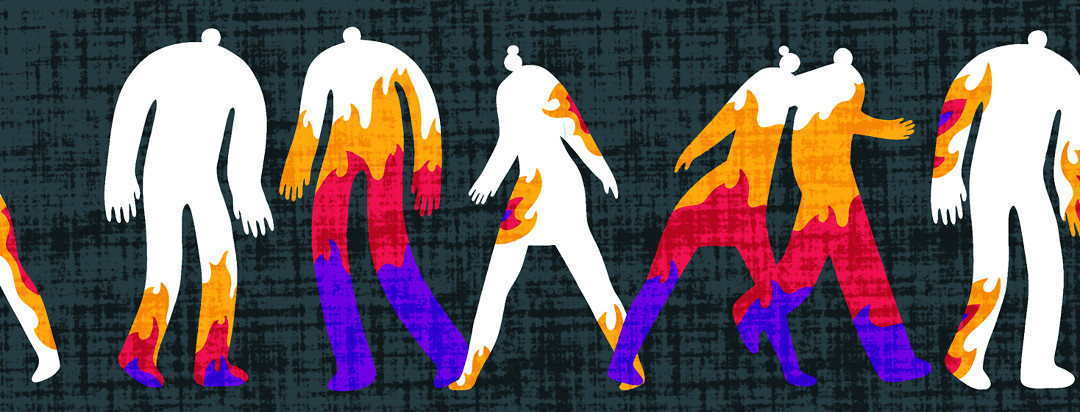Living With Axial Spondyloarthritis & Fibromyalgia
When you live with axial spondyloarthritis, the pain is constant. Not to mention the brain fog, extreme fatigue, stiffness, trouble sleeping, and more. Many people who live with AxSpA also live with fibromyalgia — and the symptoms are very similar. Fibromyalgia can cause many of the symptoms that AxSpA causes, and living with both conditions can be debilitating.
Axial spondyloarthritis and fibromyalgia: a lot in common
Fibromyalgia and AxSpA have a lot in common. They can both cause widespread pain, sleep troubles, depression, digestive issues, brain fog, and fatigue.1,2
Both AxSpA and fibromyalgia can be hard to diagnose. Their symptoms are often misunderstood or ignored. Sometimes, people are diagnosed as having one condition, when they really have the other. It’s especially common for women to be diagnosed with fibromyalgia when they really have AxSpA.2 And many people live with both.
It’s a lot to cope with
We asked our Facebook community to share what it’s like living with both fibromyalgia and AxSpA. Here’s what they said:
"So much pain my brain won’t shut down and I’m on Facebook at 1:15 in the morning. Life sucks!"
"A living hell."
"Constant pain over my entire body."
"Constant pain and issues sleeping."
"Torture."
Ways your doctor can help
It can be hard to get a straight forward diagnosis. If you have been treated for AxSpA but feel that your symptoms are not improving, ask your doctor if fibromyalgia may be a factor. Similarly, if you’re being treated for fibromyalgia but are experiencing AxSpA-like symptoms, ask your doctor.
Many people who have both AxSpA and fibromyalgia may need different medications than someone with just one of those conditions. AxSpA is usually treated with NSAIDs or biologics. Fibromyalgia is often treated with medications for nerve pain.3 People with both conditions may need to take both biologics and nerve pain medications, for example.
Lifestyle changes
Certain lifestyle changes may help improve some of your symptoms. These can include:
- Exercise. Many people with both AxSpA and fibromyalgia find that exercise can help improve their pain levels and mood, as well as improve their sleep. Start slow with low-impact activities, such as walking, stationary biking, or yoga. It’s important to listen to your body and only go as far as you can.
- Meditate. Incorporating meditation or mindfulness into your day-to-day life may help improve your pain levels. There are many apps and online videos available to help guide you through a meditation. Or simply sit in a comfortable position and listen to your breath.
- Improve your sleep (or try to). While this is easier said than done, sleep can play a very important role in mood and pain regulation. It can be helpful to stop drinking caffeine early in the afternoon. It can also help to read or listen to relaxing music before bed instead of looking at your phone or another screen. If pain is getting in the way of your sleep, your doctor may be able to help.
If you have found something that helps with your fibro and AxSpA, please share in the comments below.

Join the conversation